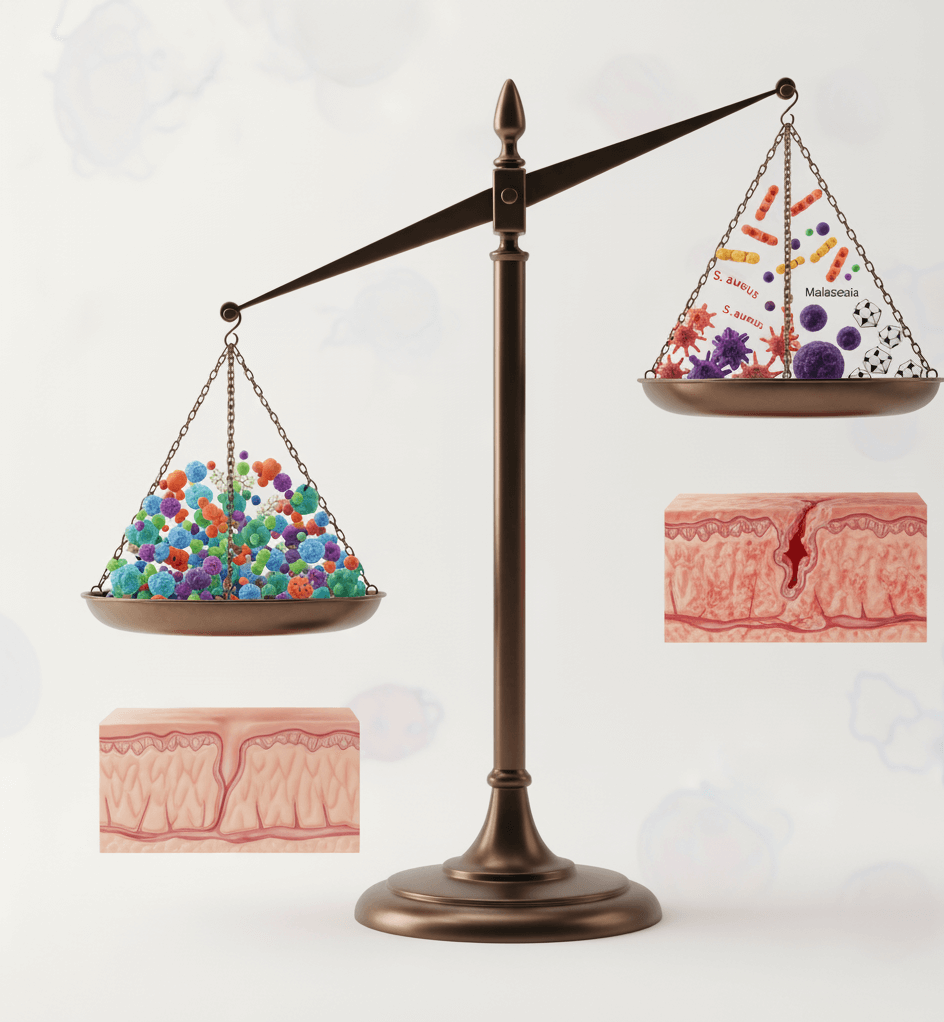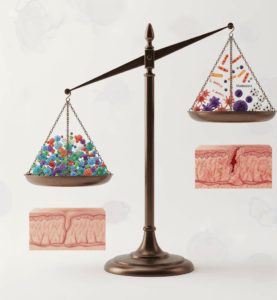
Did you know that invisible shifts in the fungi and viruses living on your skin could flag a dramatically higher risk of developing squamous cell carcinoma before a single tumour appears?
“Analysing skin microbiome changes to identify patients at high SCC risk before they develop several SCCs could revolutionise dermatologic care.”
– Shadmehr Demehri, MD, PhD, Massachusetts General Hospital
What You’ll Learn
- The exact microbial “red flags” found in high-risk and transplant patients
- How Malassezia fungi and Betapapillomavirus viruses outperform traditional risk scoring
- Why age-related immune decline mimics transplant immunosuppression
- Practical steps London and Hertfordshire residents can take today
- When microbiome testing might enter routine NHS and private clinics
Introduction
Cutaneous squamous cell carcinoma (cSCC) is the second most common skin cancer in the UK, with over 45,000 new cases annually. Until now, dermatologists have relied on past tumour count, UV history, and immunosuppression status to stratify risk. A July 2025 study from Harvard and the NIH changes everything: subtle expansions of skin fungi and viruses predict cSCC burden with startling accuracy. Here we translate the science into actionable advice for patients attending our Barnet and Hertfordshire clinics.
The Study That Rewrote Risk Prediction
Researchers swabbed six body sites on 30 adults:
- 6 high-risk non-transplant patients (average 11.8 prior cSCCs)
- 15 organ-transplant recipients on lifelong immunosuppressants
- 9 low-risk controls (0.33 prior cSCCs)
Shotgun metagenomic sequencing revealed:
- Malassezia restricta and Malassezia globosa fungi ballooned in both high-risk groups
- Betapapapillomavirus (beta-HPV) viral loads soared
- These taxa discriminated high- from low-risk skin with >90 % accuracy
No visible seborrhoeic dermatitis or warts were needed; subclinical shifts were enough.
Why Fungi and Viruses Matter More Than Bacteria
Earlier studies focused on Staphylococcus aureus surges in established tumours. The 2025 data flip the script:
- Fungal and viral overgrowth precedes tumour formation
- They mirror “functional immunosuppression” seen in 78-year-olds versus 63-year-olds
- Commensal beta-HPV may even train immunity against p53-mutated cancer cells – a natural “mini-vaccine”
Age Is Not Just a Number: The Immunosenescence Link
High-risk non-transplant patients were 15 years older on average. Their microbiome mirrored transplant recipients, suggesting ageing quietly dials down skin immunity. This explains why our Barnet clinic sees multiple cSCCs in otherwise healthy 70- and 80-year-olds.
From Lab Bench to Clinic Bedside
- Enhanced Screening – We now ask about new warts in fair-skinned adults; a clue to beta-HPV expansion.
- Targeted Monitoring – Transplant patients receive six-monthly total-body microbiome-aware checks.
- Research Pipeline – Demehri’s team is developing £30 swab kits to replace £1,200 sequencing. Expect NHS pilots by 2027.
Read more: Annual Skin Cancer Screening in London
Patient-Friendly Ways to Protect Your Skin Microbiome
- Gentle cleansers (pH 5.5) preserve commensal Cutibacterium acnes
- Broad-spectrum SPF 50 prevents UV-driven dysbiosis
- Probiotic skincare remains unproven; focus on barrier repair with ceramides
Discover evidence-based sunscreens in our Skin Cancer Prevention Guide
Conclusion
The skin microbiome is no longer a curiosity; it is a risk predictor rivalling genetics. By spotting Malassezia and beta-HPV surges early, dermatologists can shift from reactive excision to proactive surveillance, sparing thousands of Britons from disfiguring surgery.
Take Control of Your Skin Health with The Skin Care Network Today
Ready for a microbiome-aware skin check tailored to your risk profile?
📅 Book your 2025/2026 screening at our Barnet clinic with The Skin Care Network
📞 Call 02084411043 or request an appointment online
Frequently Asked Questions
Trillions of bacteria, fungi, viruses, and mites live on and in your skin, keeping pathogens in check and training local immunity.
Not yet. Our consultants use clinical history plus dermoscopy. Swab tests are research-only but may become routine within 2–3 years.
No evidence supports oral or topical probiotics lowering cSCC risk. UV protection and gentle cleansing remain the gold standard.
Yes. Lifelong immunosuppressants cause the largest Malassezia and viral expansions. Six-monthly screening is essential – see our transplant skin care page.
Intriguing hypothesis: genital HPV vaccines might deplete helpful skin beta-HPV. Long-term studies are underway; continue vaccinating children.
Absolutely worth a review. Age-related immune drift often triggers microbiome shifts identical to transplant patients. Early Mohs surgery cures 99 %.



